... I'd say Liphook fits the bill?
When it was announced that this years Buda Cup was being played at Liphook, I hate to admit it, but I had to go scrambling for the books and a quick internet search, as I’d never heard of it. A year and four rounds later, and Liphook is now a firm favourite!
The course was originally laid out by Arthur Croome, one of the partners of the design practice of Fowler, Abercrombie, Simpson and Croome, though “Crumbo” was more of a manager and publicist. Liphook would be his only design, with later course developments by Simpson who lived nearby.
The course plays over Wheatsheaf Common, a delightful rolling area of heathland, but with added interest from the historic rig and furrow from past farming of the land
http://en.wikipedia.org/wiki/Rig_and_furrow and also being divided by both the London to Portsmouth railway line and the B2070 road which isn’t too bad now, but before the bypass would have been the old A3, again from London to Portsmouth. The rig and furrow add architectural interest to some of the hazards and land, and the road and railway aren’t as intrusive as you would think, apart from the rather dicey crossing back over the road and under the rail bridge. The course is also split virtually equally between Hamsphire and West Sussex with several holes playing over both counties.
Here is the understated but welcoming clubhouse as seen when walking past the 18th green, on the way from the visitors car park

From the first tee, there is a marvellous view down the 18th hole and its green with a steep front tier. The proximity of this magnificent heather faced bunker is a great indication of things to come. You can also see the subtle hole markers and name plates
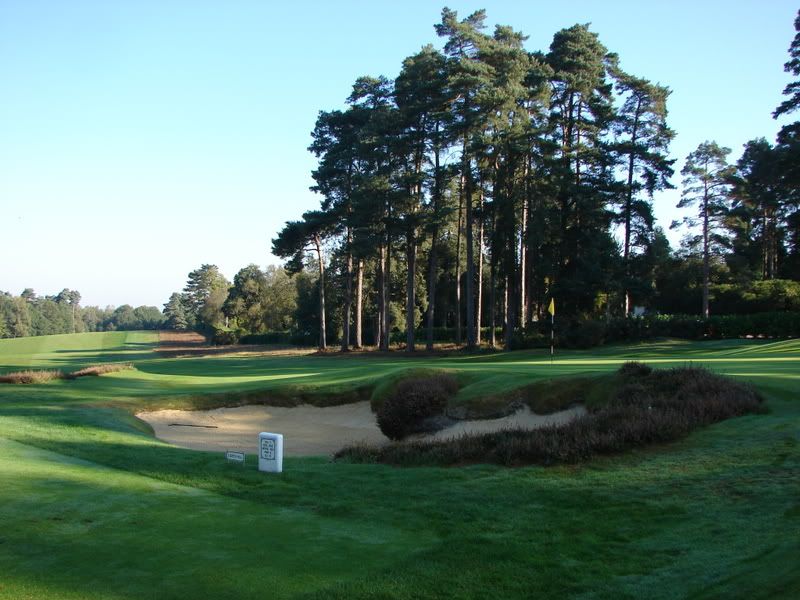
All yardages are given from the white tees. Also, the pictures come from four different rounds over the course in two days, hence the different shadows and hole locations, though even with that much golf I’ve managed to miss a few pics I wanted!
Hole 1
202 yards
Par 3The yardage would suggest a stern test to open with, but the hole plays slightly downhill to a relatively large green with no bunkers, though there are some interesting humps and hollows. A tee shot landing short and left should kick around nicely

A closer look at the green reveals the drop off to the front right

And from behind you can see these humps and hollows off to the left of the green. They appear to be a continuation or enhancement of the existing rig and furrow which is a great use of an existing landform even if it was originally manmade for another purpose
 Hole 2
Hole 2
431 yards
Par 4A long and slightly uphill par 4, the fairway slopes significantly from right to left so the best play is to the right and let the slope bring the ball to the middle of the fairway, but push it a little and Liphook’s answer to the Church Pews comes into play, these deep heather covered rig and furrow lines

The approach needs to carry a small estate road which cuts out a view of the green, but you will shortly find there is plenty of room around the green

A view of the green from the road. It slopes quite a bit from right to left, much as the fairway did, so again favour the right and let the ball run down
 Hole 3
Hole 3
139 yards
Par 3Another par 3 early in the round, uphill all the way. There are 2 deep bunkers just short which you will need to avoid as well as a series of little ridges around the front that will kick a ball back into these bunkers if you aren’t careful. The white tee is pretty close to the previous green on a heather clad mound

A view up towards the green and a slightly closer look

 Hole 4
Hole 4
460 yards
Par 4A long carry off the white tees but its all downhill and actually quite wide open, though the trees down the left will catch even the slightest pulled tee shot. An old tee behind the 3rd green would have made this a dogleg right and perhaps a more interesting hole

Quite wide open at the front but a bunker short left is considered controversial as Croome never approved of it

A closer look at the green shows how wide open the approach is, but there is a bunker right and one left behind the hollow that can be seen

Looking back over the left bunker at the hollow short left which feeds into the green contours nicely

Now its time for the first road crossing…
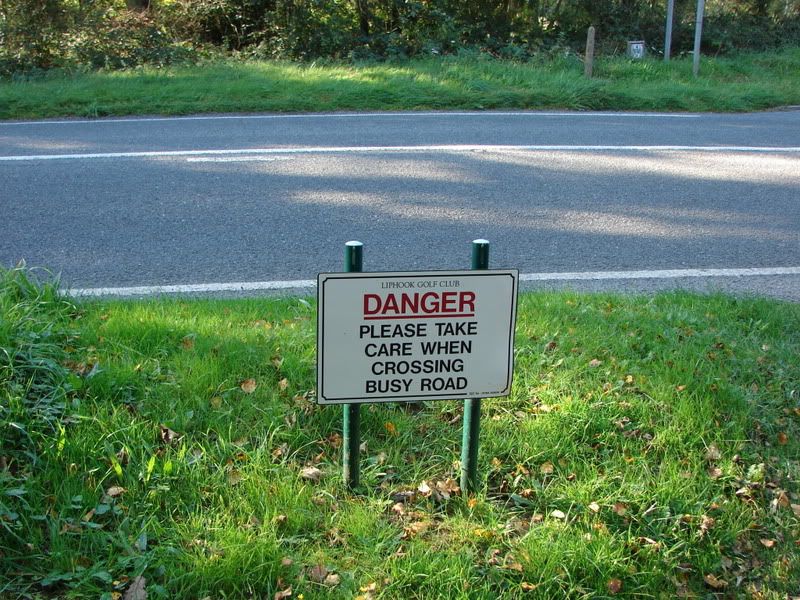 Hole 5
Hole 5
489 yards
Par 5Simpson considered this one a great hole to the extent he included it in his list of 18 holes in “The Architectural Side of Golf”, though at that time it played as a long par 4.
The drive is over plenty of heather and an estate road.

The left hand side will possibly leave a better angle for your second but will be flirting with a few trees that can be seen just left of this picture

A line of bunkers up the right stand guard over your second shot

The green and its surrounds all fall from left to right, so anything short and left be it with a 3 wood or a pitch, should run onto the green, but there are a couple of deep bunkers there, hidden in the shadows. However aim for the centre of the green and you will probably run off the green right leaving a tricky chip back
 Hole 6
Hole 6
422 yards
Par 4The fairway itself can’t easily be seen from this tee. The safe line is over the left of the tree, the bold line is over the right with a touch of fade to avoid running out of fairway or into the fairway bunker

The approach is to a green which looks pretty small from a distance

A closer view reveals the raised back tier which may encourage a bold second…

But over the back of the green is a steep fall away and a tricky hollow. Generally, long isn’t too good at Liphook

Looking back, you can clearly see the dogleg of the hole

The right hand greenside bunker is a typical example of the heather clad bunkers

Now another obstacle to be crossed, a bridge over the railway which will run tight against the next 2 holes
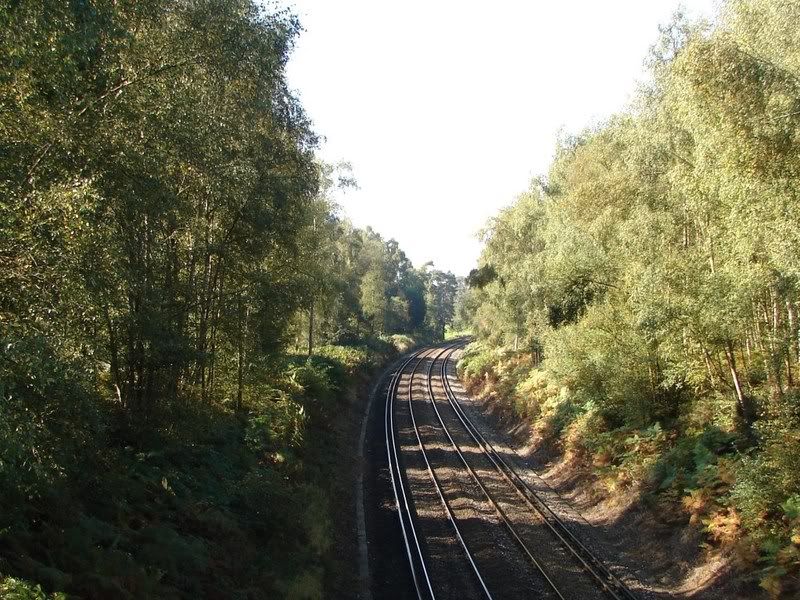 Hole 7
Hole 7
149 yards
Par 3The view on the 7th tee is one to inspire anyone who loves heathland golf. The 13th goes away from you on the left while the 7th is to the right, tucked behind the heather foreground with the 8th beyond. An inviting looking green is actually quite a small well defended target.


A closer look reveals the sharp left to right slope of the front tier and tricky bunkers to each side of the green. The larger rear portion of the green is flatter, but again going long is to be avoided

Looking back towards the tee
 Hole 8
Hole 8
341 yards
Par 4Your drive over a valley is to a fairway that doglegs away to the right. The bunkers on the outside of the dogleg are a recent addition, however apparently there used to be bunkers on that side many years ago, but the tree growth overtook them making them redundant. The bunker short right is pretty much out of play for most but a delightful throwback to bunkers of old

Quite a tricky green to approach, as its quite large but narrows to the rear, again with steep dropoffs all around.

A closer look at the green reveals a knob smack in the middle so if you have played safe to avoid going long, you will be left with a tricky long putt
 Hole 9
Hole 9
433 yards
par 4This hole was a firm favourite, which makes it easy to overlook the pylon in the distance. Plenty of room from the tee, but you will need to keep your tee shot tight to the right for the best angle at the green.

Signage just in front of the tee gives a clue of the days hole location

From the fairway, the approach is blind over more heather clad rig and furrow

Once over the crest of the hill, past the heather and the green reveals itself in all its glory. From the right side, the approach can easily run on to the green, from the left and the left hand mound comes into play, known as “Simpson’s Mound”. Plenty of interest all around this green.
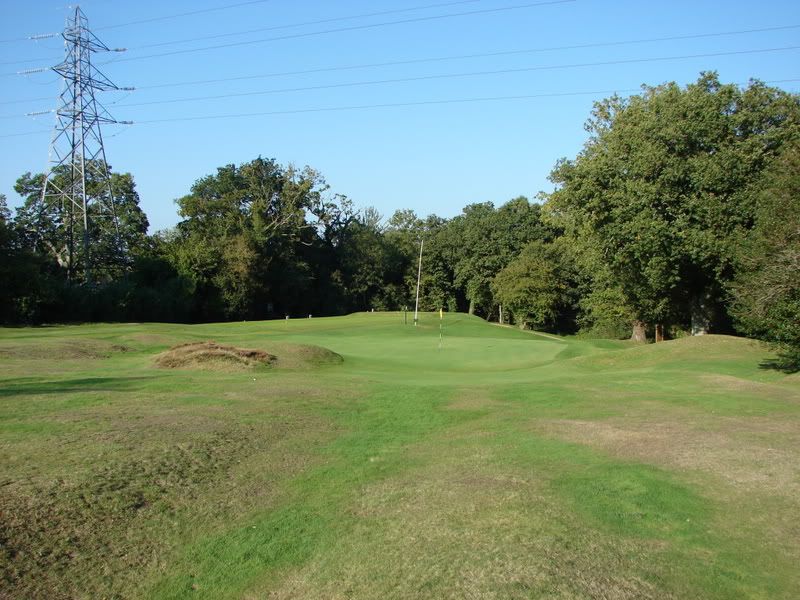

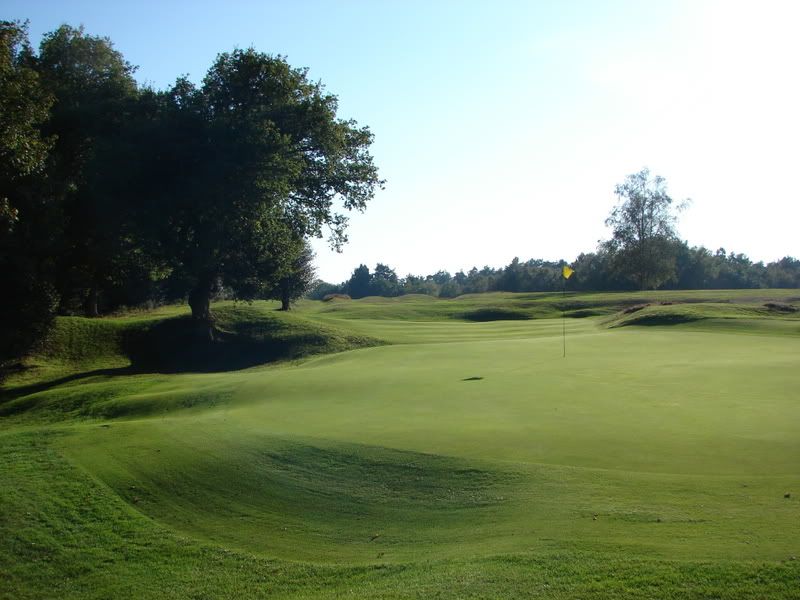

This hole would have played as the 18th on the original layout, when golfers would wander down to what was then The Wheatsheaf public house (now The Links). It would have made a stern test for a closing hole! This photo hanging in the clubhouse shows this green when it played as the last, with the pub that also served as the clubhouse away in the distance. Note tee for what is now the tenth is much further back than today.

The two nines were switched when the club decided to build its own clubhouse. Land was purchase just before the Second World War, with the work being carried out in 1949. The old tenth hole played from the current 18th tee to the current 1st green, but with the clubhouse now sited up on the hill to the left, from the current 18th tee the hole now doglegs uphill towards a new green, with a new par 3 1st hole back down to the old 10th green. The old 4th, a par 3 of about 150 yards, played from roughly the current 12th green, up towards the current 13th tees, was the hole omitted.
So that’s the front nine holes finished. At 3,066 yards and par 34.
More to follow shortly.
Cheers,
James